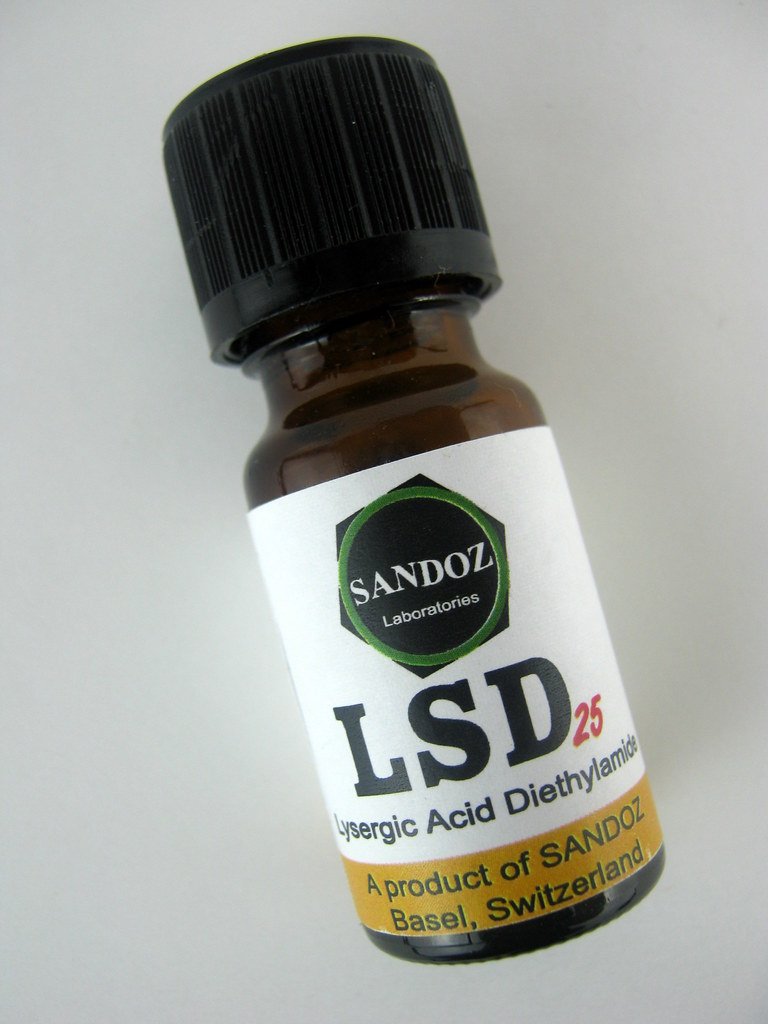Psychedelics are a group of chemicals that occur naturally in nature or synthesized in the laboratory, which produce psychedelic state that is "open mind."
A key part of the word - the word "psychedelic" is a translation of the English word psychedelic, derived from the Greek ψυχή (psyche, "mind") and δηλείν (Madeleine "show, manifest"), which loosely translated means "mind-manifesting". The combination of these two words suggest that psychedelics could be useful in discovering and developing the full potential of the human mind.
The very word "psychedelic" is a neologism and was first used by British clinical psychologist - Humphry Osmond, in response to a proposal by Aldous Huxley, who invented a name for these measures, and it soundedphanerothyme. Osmond answered this verse: It fathom hell or soar angelic, just take a pinch of psychedelic, which has introduced its version permanently to the English language.
Psychedelic substances since the dawn of human history have been used for healing, divination, or make contact with the supernatural and the spiritual realms. Since time immemorial, plants, and animal substances, which contain the psychoactive alkaloids, were used for ritual and magical purposes by the traditional, highly developed spiritual culture in different parts of the world, within the .
Jivaro shamans from Ecuador under the influence of ayahuascasee, for example, distant persons and their duties are performed.
Among the most famous psychedelic substances are LSD-25 LSD-6, LSA, psilocybin, psilocin, dimethyltryptamine (DMT), harmaline, mescaline, IT-290 (AMT), scopolamine, ibogaine, muscarine, myristicin and many others. The invention of many of them are associated with the development of modern pharmaceutical industry - and psilocybin have been synthesized in the laboratory of the Swiss company Sandoza .
History of medicine inform psychedelic substances already used 3500 years ago. Brought to India by one of the Indo-European tribes - probably a result of trade - had a major impact on the development of Hindu religious and philosophical thought. As many as one hundred and twenty verses of the Rig Veda is devoted to soma distorted.They extol the extraordinary effects that this divine drink induced in followers.
Those who drank it, to give up ecstatic rapture in which "in the middle were on the ground, and half in the heavens." Their bodies were strengthened, hearts full of courage, joy and enthusiasm, minds were clear, and they are confident of their immortality.As we know today, most of the historical non-Christian cultures showed similar for a long time, a very positive attitude to psychoactive substances including the Mayans, Toltecs, Aztecs, Egyptians, Goths, Scandinavians, Chinese, Thracians, ancient Greeks and Romans.
Psychedelic pharmacopoeia was particularly rich in Central America, where these pre-Columbian cultures have used at least sixteen different plants with broad mind altering properties. The most famous of them are the peyote cactus (Lophophora williamsii), the sacred mushrooms teonanacatl or "flesh of the gods" (Psilocybe mexicanacubensis) and ololiuqui (indigenous name of the seeds of the morning glory Turbina corymbosa).
t was quite unusual - usually experimental substances were forever deletion of the research program, if it is considered that they have no use for the production of medicines.
So, for the spring of 1943 I repeated the synthesis of LSD-25.You can not do this with yourself if you have not done this with the infinite, the process of energy around you and you can not do this with a woman until you do it with him.
Natural and obvious way of taking LSD, a session with a representative of the opposite sex and LSD session that does not ultimately connect with a person of the opposite sex, is incomplete.Despite this LSD US banned completely in 1970. reasons political and moral, which automatically zastopowało all research! This condition is maintained until the end of '80. Way return of psychedelics for research paved Dr. Rick Strassman in 1990, which for the first time after 20 years of a strict ban started them on the N, N-dimethyltryptamine (DMT). They lasted until 1995 and included 60 volunteers.
Then came the time to research by Dr. Charles Grob of the effects, caused by psilocybin, which, however, the US FDA has allowed only be performed on patients who are in stage IV cancer. This researcher has previously worked for several years in Brazil over the use of religious brew ayahuasca for drug prevention.Next to them is worth mentioning also ended in 2006, a research project by Dr. Francisco Moreno, who has studied the use of psilocybin in the treatment of chronic, difficult to treat obsessive-compulsive syndrome. In addition, there are also a very promising research, conducted by Dr. Deborah Mash the use of ibogaine in the treatment of addiction, conducted since 1993.
In 2008, resumed at the Swiss research on LSD under the direction of Dr. Peter Gasser, who argued that: Thespecificity of this again should be included in the hands of doctors.Approved by Swiss medical authorities (Bundesamt für Gesundheit) project, costing $ 190 thousand.,.
The Swiss experiment began in a place where researchers came a few decades ago - is considering the use of LSD to relieve acute anxiety experienced by terminally ill, such as cancer.




Was this translated from another language? It's hard to read.